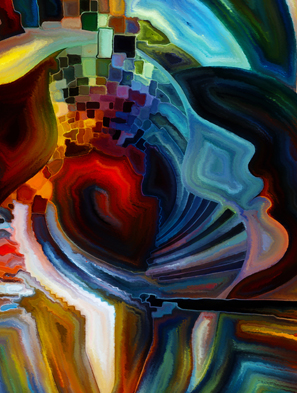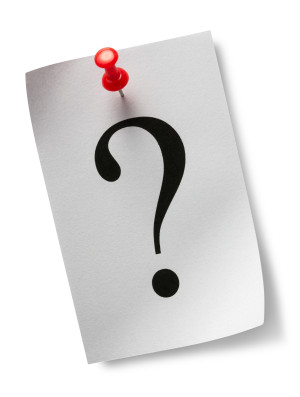Emotion
The History of Emotion
Have we always understood emotion in the same way? Has human experience of emotion actually changed over time or has it remained constant? Examining ’emotion’ from an historical perspective enables us to identify a variety of questions about how emotion and the mind works.
 Anatomising the Emotions: The Human Mind in History
Anatomising the Emotions: The Human Mind in History
Thomas Dixon runs a research centre for the History of Emotions at Queen Mary University of London. His new Wellcome Trust funded project Living with Feeling: Emotional Health in History, Philosophy and Experience uses humanities research to think about what it means to be emotionally healthy in the modern world. Thomas presented a talk on his research at our conference on Emotion, Memory, & the Mind.
Continue reading...
Anatomizing the Emotions: The Human Mind in History
Thomas Dixon, Reader in History, Queen Mary University of London; Director, Centre for the History of the Emotions
Thomas Dixon is a historian – or, better, an anatomist – of living and lost emotions. A history of emotions, of human feelings throughout the centuries, is primarily a history of psychological categories. His work is an attempt to break emotions down into their constituent parts, both historically and in the present. The historical perspective is emphasised in Dixon’s research demonstrating that a culture’s conception of emotional life changes over time.
People started talking about emotions only recently. The term emotion appears in common speech only after the first half of the XIX century. The previous psychological terminology for defining affective states ranged from appetites to passions and affections. The invention of emotions is credited to philosophers and scientists like Spencer and Darwin. And, like concepts, emotions change over time. According to historian Lucien Febvre, the science of contemporary psychology has no genuine applications to the past, and contemporary psychological concepts cannot be used for interpreting our ancestors’ feelings and mentality[1]. Indeed, the way in which we feel emotions today has little in common, for example, with how people perceived themselves in the middle ages.
How do we define emotions, and what do those definitions mean?
At the extreme of the historical perspective, entire categories of emotions (or affects or motivations or passions) that once existed do so no longer. It is not just that the content of emotions that change, but that their actual embodied production can change within cultures over time.
Are emotions natural kinds or are they artificially “created” as concepts are? Indeed, at least in conceptual terms, altruism seems not to exist before Auguste Comte’s religion of humanity[2]: are we born selfish and do we learn generosity later in time[3], or is altruism a natural, blessed misfiring[4]? How could science treat emotions without becoming moralist (see Darwin’s claim that “the virtue will be triumphant”[5])? How does our affective style change over time (from Darwin’s assumption that “Englishmen rarely cry”[6] to Dixons’ Weeping Britannia[7]). How does the style change what we actually perceive? What is cross-cultural and what is not?
How does the public sphere engage with emotions?
Consider the usage of anger in politics: what are the implications of the public attempts to control and guide emotions[8]? What is constant – from Aristotle’s first reference to political anger[9] to Darwin’s distinction between animal and moral anger[10] – and what changes in the way in which humans experience shared affective states?
Can the scientific study of emotions benefit from a historical perspective?
Dixon’s perspective cautions against neuroscientific reductionism regarding emotions. This speaks to the study of emotions with respect to consciousness and first person experience. Dixon suggests that the reduction of emotions to stereotyped categories – consider classic work in the 1970s and beyond such as Paul Ekman’s
In considering the question “what is anger?”, Dixon asks if anger is a coherent emotional entity or multi-faceted. What does it mean for a person to be in anger? How do other people react to individual expressions of anger? The experience of anger may imply further moral implications for the person – that is, how do I feel about feeling this way? Do we, as humans, experience Darwin’s animal anger, and does this lead to conscious, first-person assessment of whether that feeling was moral?
[1] Febvre, Lucien (1941) “La Sensibilité et L’histoire: Comment Reconstituer La Vie Affective D’autrefois?” Annales D’histoire Sociale (1939-1941) 3, no. 1/2 : 5–20.
[2] Dixon, Thomas (2008) The Invention of Altruism: Making Moral Meanings in Victorian Britain. OUP/British Academy, 2008.
[3] Dawkins, Richard (1989) The Selfish Gene. Oxford University Press.
[4] Dawkins, Richard (2016) The God Delusion. 10th Anniversary Edition. Random House, 2016
[5] Darwin, Charles (1981) The Descent of Man. D. Appleton and Company
[6] Darwin, Charles (1872) The Expression of the Emotions in Man and Animals. Impression anastalitique Culture et Civilisation
[7] Dixon, Thomas (2015) Weeping Britannia: Portrait of a Nation in Tears. Oxford University Press
[8] Stearns, Carol Zisowitz, and Peter N. Stearns (1989) Anger: The Struggle for Emotional Control in America’s History. University of Chicago Press
[9] Aristotle (2010) Rhetoric. Cosimo, Inc.
[10] Darwin, Charles (2010) “A Biographical Sketch of an Infant.” Annals of Neurosciences 17, no. 4: 187–90.
[11] Ekman, P. (1992). Are there basic emotions? Psychological Review, 99(3), 550-553.
I think there is genuinely a case for the huge diversity in how we experience emotions.
– Thomas Dixon (33:15)
I think that our beliefs about what is appropriate and our beliefs about what our emotions show about us are a part of our experience of having and expressing that emotion.
– Thomas Dixon (25:40)
This is my contribution to human knowledge, limited as it might seem: Before the early- to mid-nineteenth century, people didn’t really talk about emotions in the way that we do today… To talk about the emotions as a coherent psychological category about which we might theorise, only really comes in to existence with the birth of modern psychology in the second half of the nineteenth century…The emotions didn’t exist before the nineteenth century.
– Thomas Dixon (8:40)
The human body is obviously a huge part of what is it to be emotional and have emotions. My own turn towards the body came in the form of researching the history of tears, of weeping, an extremely embodied activity. This book Weeping Britannia traces the history of Britain through British tears over 600 years… Using it to tell a historical story about the changing emotional or affective style of Britain over the centuries. This is the British stiff upper lip and the history of it.
– Thomas Dixon (22:00)
As a historian of emotions in a way I want to have it both ways. I want to say, there is an almost indefinite potential for diversity in terms of the ways that we experience and feel our affective states. There is something very limiting and unsatisfactory about the basic emotions model. But on the other hand, I want to say that we can study the emotions and feelings of human beings in the past and other cultures, and have some sense that we know what it is we are studying… There is something that links human feeling to human feeling across time and across culture
– Thomas Dixon (30:50)
Dixon’s perspective cautions against neuroscientific reductionism regarding emotions. This speaks to the study of emotions with respect to consciousness and first person experience. Dixon suggests that the reduction of emotions to stereotyped categories – consider classic work in the 1970s and beyond such as Paul Ekman’s emotional faces – may not always be sensible.
 Mass Observing Emotion in Post-War Britain
Mass Observing Emotion in Post-War Britain
Claire Langhamer recently joined us to give a historical perspective on self-understanding, using primary historical sources. Claire’s cultural history suggests that the experience of emotion is deeply both social and political.
Continue reading...
Can emotions become a category of historical analysis?
By using direct questionnaires, Mass Observation included for example questions about emotion in the workplace; the impact of work on the emotional wellbeing; people’s feelings about the atomic bomb and the death penalty. Does Mass Observation work as a reliable source for the historian? Given the subjectivity and the plasticity of emotions and of emotional codes, can the historian draw general conclusions from single cases? Is it legitimate to interpret emotions as a proxy for thoughts?
The emotional nature of Mass Observation resided in the fact that the focus was not on what society looked like, but on how it was subjectively perceived. How could the historian interpret the subjective expression of individual feelings in order to say something about a particular historical moment? This appears to be particularly relevant in reference to post-war Britain and to an age in which, in the attempt to reconstruct Britain, attention to public emotion was extended. In the mobilisation of emotional experience following the Second World War, so well captured by contemporary movies (A diary for Timothy, The captive heart, A matter of life and death, The way to the stars), and in the collapse between personal and social boundaries, we find here the roots of contemporary usage in psychology, and in political theorising.
How do “ordinary people” narrate their own lives, describe their own sense of selves, and categorise and live with their own emotions?
Academics, both in the humanities but certainly in the sciences, may be in danger of studying emotion and memory in too reductionist a manner. Can we, studying the human mind, gain valuable clues and insights from everyday narratives and “folk psychology” as to exactly which questions we should be asking, and how to ask them?
Emotional politics
One intriguing point Langhamer made was with regards to the use of emotion to support knowledge (or at the very least, the communication of an emotion as a way to support one’s assertion in the absence of concrete evidence). We are all familiar with public figures asserting that something is so because they feel it to be so, even to the point that their emotional feeling about the point trumps the objective facts. This might beg the question as to the exact emotional (and indeed physiological) accompaniments to confidence in a judgement (misplaced or otherwise). Is the politicians’ appeal to feeling this is right truly an emotional response? In the lab, is confidence in a particular judgement accompanied by a measurable affective reaction?
 In her presentation Claire Langhamer described the British Mass Observation study system, a vast archive of interviews, media, and first person reports (such as diaries) that set out to ascertain the self-image of Britain following the Second World War. Set up by a group of people led by Charles Madge, Tom Harrison and Humphrey Jennings, Mass Observation was meant to promote a “science of ourselves”, or a photograph of contemporary life, through the contribution of a huge panel of volunteers.
In her presentation Claire Langhamer described the British Mass Observation study system, a vast archive of interviews, media, and first person reports (such as diaries) that set out to ascertain the self-image of Britain following the Second World War. Set up by a group of people led by Charles Madge, Tom Harrison and Humphrey Jennings, Mass Observation was meant to promote a “science of ourselves”, or a photograph of contemporary life, through the contribution of a huge panel of volunteers.
Podcast
A Thinking Allowed special on ‘love’. What are the origins of our notions of high romantic love? Was the post war period a ‘golden age’ for lifelong love? Has marriage for love now failed? Laurie Taylor hopes to finds some answers with the help of the social historian, Claire Langhamer, the philosopher, Pascal Bruckner, and the sociologist, Professor Mary Evans.
Producer: Jayne Egerton.
Embodying Emotion
How much of emotion is in the mind and how much is in our bodies? Is there a difference? In this section we look at the embodiment of emotion and the mind.
 Body Memory and Affectivity
Body Memory and Affectivity
Giovanna Columbetti’s discussed her research on phenomenological perspectives and emphasised the embodied nature of emotions. Introducing us to the ‘4 Es’ of cognition, she argued that the mind is embodied, embedded, enactive and extended. She emphasised that we need to combine subjective experiences and phenomenological intuitions with psychology and cognitive neuroscience.
Continue reading...
Cognition is not all in the head
Are we simply biological entities? What is the relation between body, cognition, and affectivity? Arguing against traditional cognitivism, 4E Cognition supports the view that cognition works in a dynamic relationship with the body and the environment. Colombetti’s work aims at bridging the gap between cognition and affectivity, applying to the latter the same sort of categories that philosophy of (cognitive) science applies to the former.
Could affectivity also be embodied, embedded, enactive, extended? Under the assumption that both cognition and affectivity have physical bases and are supported by bodily processes, what does it mean to localise them? Within this realm, how could theoretical reasoning and the scientific enterprise be mutually beneficial?
Colombetti recovers Merleau-Ponty’s notion of body memory[1], according to which memory is implicitly present in bodily scheme and action, combining it with Bergson’s[2] distinction between souvenir image (an imaginistic form of memory) and memoire d’habitude (the act of remembering via repetition). In opposition to Descartes’s mind-body dualism, Merleau-Ponty defends the notion of a habitual body, in which our memories are engrained. Reinterpreting Descartes’s famous saying in Merleau-ponty’s spirit: I am a bodily being. I can.
We are essentially possibilities of action and we cannot doubt the experience of ourselves as having the capacity to move in the world. In this sense, the body that I am is not just a thing, a physical object (Körper), but a subject of experience, a locus of subjectivity (Leib). Memories become engrained in the body through habituation. We acquire bodily and motor skills, and perform actions spontaneously and pre-reflectively. Our habitual actions become the ways in which the world opens up to us. As in a sort of continuous object incorporation (another Merleau-Pontian concept), the body is an ever-changing entity that also continuously modifies itself in relation to the lived world. As an example, consider learning to rock climb: as the body accumulates new motor skills for climbing, the way in which one is open to bodily interaction with the world is changed. One starts to look at different surfaces in the environment in terms of how one would climb them.
It is in this sense that memories are engrained in the body itself: a child learns a musical instrument slowly at first, until the skills for playing individual notes, then chords, passages, whole pieces, are imbued with expressivity and incorporated into the body and repertoire of motor skills. This can be understood as the sedimentation of bodily skills, in which memories become layered accumulations of the body’s past. Interestingly, many of these acquired bodily skills are subsequently performed pre-reflectively, without a large degree of conscious thought or analysis.
What is the connection between body memory and affectivity?
Affectivity can be understood as the capacity to be affected, as the lack of indifference to the external world: an affective being displays a characteristic capacity to care. Human beings may show a variety of affective states. In particular, philosophy distinguishes between emotions (about specific objects), moods (feeling states), and motivational states.
The relation between affective states and body memory is multi-faceted. Objects can be affectively incorporated in the habitual body. And it is with our body that we learn – through time, culture, and mimicry – to express emotions. Our body can also retain specific memories of traumatic events, which affect how we experience the world and our possibilities of action.
Body memory and the world
Colombetti describes emotions and affective states as embodied responses, representing the capacity to be affected by the external world. The skills for firstly being open to affectivity/emotion, and secondly expressing emotion and acting towards the world are learned in the body.
In other words, the body is thus not just a tool for communicating emotions, but also a way of interacting with the world in an affective way. One might not just look and speak in a happy, sad or angry manner as a way of communicating those emotions to others, but also perform goal-oriented actions in a happy, sad or angry way, as a system to achieve those goals in a different manner, or towards a different outcome.
Body memory can also be normative: over the course of our lives we accumulate body memories or habits which are engrained by more or less explicit rules present in our social environment, via encouragement, engagement, or scolding. Mimicry of others can also be implicated in the production of body memory – especially in the social normative realm, since we often mimic (consciously or not) the actions and mannerisms of those we wish to affiliate with.
A neuroscience of phenomenology?
A final striking question for the study of mind and consciousness in a cognitive neuroscience arena is how best to scientifically study phenomenological reports. How should we link phenomenological reports to neuroscientific measurements?
[1] Merleau-Ponty, Maurice (2013) Phenomenology of Perception. Routledge
[2] Bergson, Henri, Nancy Margaret Paul, and W. Scott Palmer (2004) Matter and Memory. Courier Corporation
 Blog Post
Blog Post
6 July 2016 
Are emotions ‘embodied’ mental states?
Giovanna Colombetti, Associate Professor at Exeter University, talks to us about philosophy, emotion and finding your feet in interdisciplinary research.
Emotion roundtable
During the Emotion, Memory & Mind event all participants joined in a roundtable discussion. Key questions arising from the discussion are included below. What are important questions in emotion research for you? Add your thoughts in our forums.
What is an emotion?
This is a simple question with far-reaching consequences. Giovanna Colombetti said we need to distinguish between emotions now, as an immediate subjective embodied state, as distinct from long term emotions – or perhaps emotional memories. Thomas Dixon suggested that an emotion is an embodied representation about the world, citing Darwin’s idea (also present in current psychology) that one cannot experience an emotion without some form of bodily response, but also that emotions are about the world, which is what distinguishes them from sensations. They are a shorthand for whether the state of the world is or isn’t how I want it to be. Claire Langhamer maintains that her interest is less in defining emotions as such – perhaps in an objective sense – but more in what, historically and within society, an emotion such as love actually meant to the people experiencing it. Shamil Chandaria emphasised the distinction between mood and emotion (the latter being more about something) and suggested that an emotion alters the dispositional nature of the actions one might perform (for example, performing an action in anger, or whilst happy) fundamentally changing the actual motor output of the action, or indeed the likelihood of actually performing one action or another.
Is there such a thing as a neutral emotion?
Dixon suggests all emotions are valenced and evaluative. However, Colombetti suggests that indifference may be a form of valenced affective state. Langhamer points out that a neutral position is a power-claim, and that a “neutral” position implies the possession of more knowledge.
Can one live without emotion?
Dixon described the Stoic method of separating oneself from emotion. Is mindfulness a (less extreme) form of this, a way of becoming detached from emotions? Chandaria describes meditation as becoming more deeply attuned to the bodily sensations linked to the emotion, and breaking the feedback loop between bodily sensations and reacting to them.
How has modern culture affected emotions?
One audience member raised the issue of emotional capitalism in society, whereby over the last half century or so, emotion has become a commodity in politics and economics, whereas emotional social relationships between people have become increasingly invested with questions of equity and bargaining. Langhamer points out that we have reached a situation in the last 50 years where a person’s argument might be considered stronger if it comes from a position of “authentic” emotion – speaking to conscience – rather than detached objectivity, especially in the political sphere. Langhamer raised an interesting point whereby culturally there might be a “hierarchy of emotional actors”, in that more import is attached to the person in a debate who is seen to be more “emotionally authentic”.
Emotion, Memory & the Mind Event Report (July 2016)
What we remember, and how we remember it, constitutes the texture of human life. Just as emotions shape our sense of things, including ourselves and other people, so memories shape the sense of who we are and what we have become throughout history. How do memory and emotions contribute to lived experience and identity? Are current approaches across the mind and brain sciences adequate for the task of explaining the complex nature of feelings, sensations, memory and identity? Can we study memory and emotion in other species, are there collective memories, and have our emotional lives changed over time?
Questions

Are emotions constructed?

Does science tell the full story?



